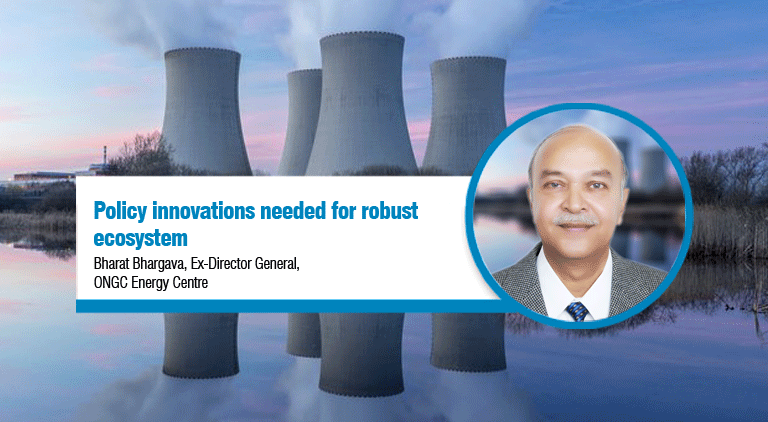Policy innovations needed for robust ecosystem
By EPR Magazine Editorial January 10, 2020 10:53 am IST
By EPR Magazine Editorial January 10, 2020 10:53 am IST

Conventional power plants may continue to meet the base load till advanced technologies start playing a dominant role in smart grid.
Bharat Bhargava, Ex-Director General, ONGC Energy Centre
Chalking the significance of conventional power generation for optimum utilisation of available renewable sources, Bharat Bhargava, Ex-Director General, ONGC Energy Centre highlights the opportunities that decentralised generation and e-mobility will emerge as a key component in the balancing act.
What are your views on the 14th edition of ELECRAMA?
The global mood as well as the Indian sentiments are now heavily tilted in favour of renewable energy and related technological innovations for mainstreaming of renewable energy in the energy mix. The focus in next edition of ELECRAMA is expected to be around this.
What opportunities do you see for smart renewables in India?
Increasing presence of renewables in the energy mix of India would require new products and systems to be developed to keep a balance in conventional power generation with optimum utilisation of existing capacities and full utilisation of available renewable power. Decentralised generation and e-mobility will emerge as a key component in this balancing act. In recent years, photovoltaic (PV)-based electricity generation in India has become competitive to thermal power-based electricity generation. PV offers immense opportunities for both large scale as well as decentralised electricity generation in the country, including rooftop plants. The rapid growth in PV capacity addition in the country will also help the utilities to go for time of the day availability of low-cost energy and also reduce distribution losses. In coming years, renewables will play a decisive role in demand side load management. This will lead to new business opportunities which are expected to be IT and automation based.
What according to you are the plans and predictions for the next two years?
There is a strong growth in the renewable energy sector during the last decade. Government has fixed a target of 100 GW of solar capacity by 2022, which means next few years annual capacity addition is likely to be about 15-30 GW per year. This can be further accelerated to move towards RE dominated energy mix. Other renewables are also expected to play an important role, but solar-based solutions along with storage are key to success. The basic ecosystem for sustainable growth is being put in place. This would require lot of innovations in the manufacturing, EPC and service capabilities, apart from instrumentation, software development and data analysis, etc. In coming years, solar — both PV and thermal — along with e-mobility will start moving together for developing a low carbon energy scenario for the country. This calls for innovations in policies to encourage a robust India-centric ecosystem. We need a co-ordinated development of the sector. India has already emerged as a leading RE country in the world. The next decade belongs to the dominance of renewables backed by IT solutions for the emergence of the smart electricity industry in India. India is poised to play a leadership role in the global RE scenario.
We use cookies to personalize your experience. By continuing to visit this website you agree to our Terms & Conditions, Privacy Policy and Cookie Policy.